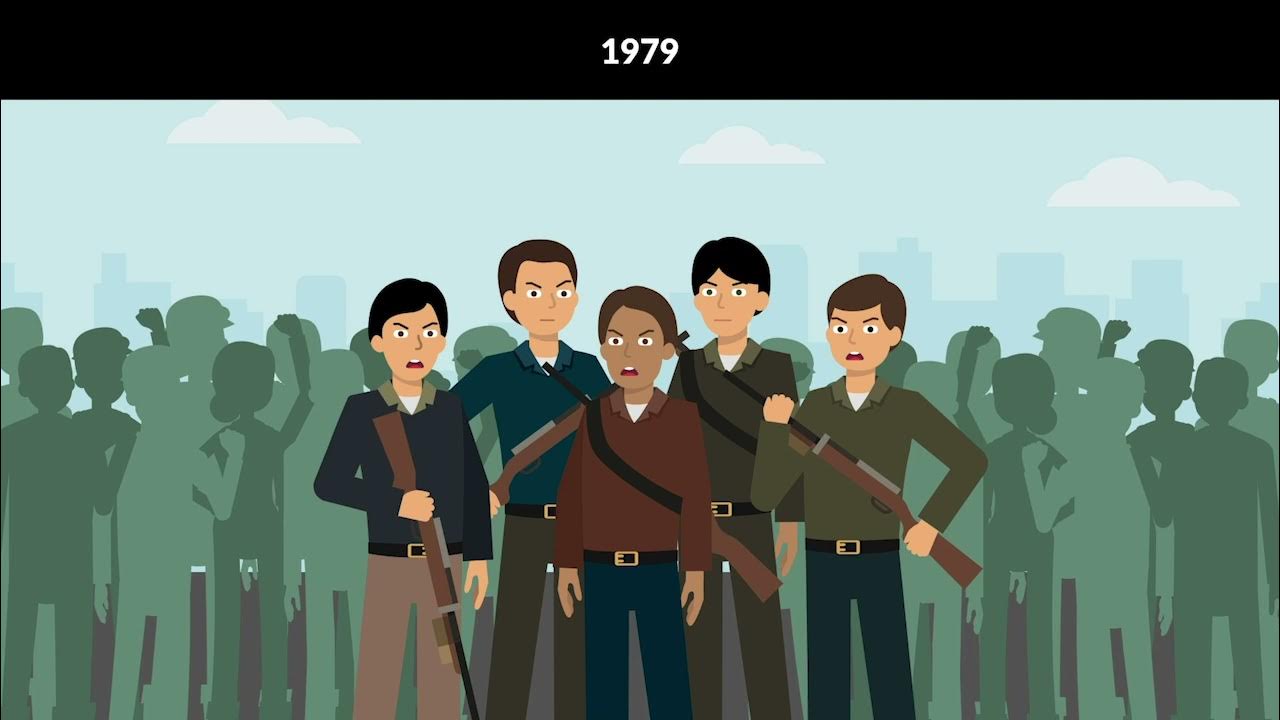US vs. Ah Chong Case Digest| Animated Video
Summary
TLDRIn the 1910 case of United States vs. Arnell, Arnell, a cook, killed his roommate Pascal, mistaking him for an intruder in the dark. The Supreme Court acquitted Arnell due to the principle of 'ignorance of fact,' as his actions would have been lawful if the intruder theory was true. The court found his mistake was without fault, as he acted in good faith with no evil intent, fulfilling the three requirements for a fact-based mistake.
Takeaways
- ⚖️ The case 'United States versus Arnell' involved a murder charge against Arnell, who stabbed his roommate Pascal, mistaking him for an intruder.
- 🏠 Arnell and Pascal shared a room without a lock, using a chair as a makeshift barrier for security.
- 🌙 The incident occurred at night when Arnell was alone and was awakened by forceful attempts to open the door.
- 😨 Arnell, fearing a robbery, threatened to kill the intruder and struck with a knife when the door was forced open.
- 🗣️ Arnell called out twice to identify the person at the door but received no response, leading to his belief of an intruder.
- 🔪 The fatal blow was delivered in darkness, and Arnell was under the impression that he was being attacked.
- 🏥 Pascal suffered immediate fatal injuries from the stab wound, leading to his death.
- 📜 The Supreme Court found Arnell not criminally liable, applying the principle of 'ignorance of fact'.
- 📝 The Court identified three requirements for a mistake of fact: the act would have been lawful under the accused's belief, the intention was lawful, and the mistake was without fault.
- 🏢 The Court emphasized that evil intent is a necessary element for crimes, which was absent in Arnell's case as he acted without malice.
- 🚫 Arnell was acquitted as he acted in the firm belief of defending himself against a perceived threat, which was his roommate.
Q & A
What was the case number and date of the United States versus Arnell Chong?
-The case number was GR No. L-5272, and it happened on March 19th, 1910.
What were Arnell Chong's and Pascal's occupations according to the case?
-Arnell Chong was employed as a cook for a company, and Pascal was employed as a house boy.
How was the room's door secured since it had no permanent lock?
-The door was secured by placing a chair against it as a means of keeping it closed.
What did Arnell do when he was awakened by someone knocking and trying to open the door?
-Arnell sat up in bed and called out twice, asking who was there, but received no answer.
Why did Arnell believe the intruder was a robber or thief?
-Arnell was convinced by the noise at the door that it was being pushed open by someone with malicious intent.
What action did Arnell take when he believed the intruder was entering the room?
-Arnell threatened to kill the intruder if they entered and then made a fatal blow with a knife when the door was forced open.
Why did Arnell think he was being attacked by the intruder?
-Due to the darkness of the room, Arnell believed he was being hit by the intruder, which led him to act aggressively.
What was the outcome when Arnell struck the intruder with the knife?
-The supposed intruder turned out to be Pascal, his roommate, who incurred fatal stab wounds and died immediately.
What charge was Arnell faced with after Pascal's death?
-Arnell was charged with murder due to Pascal's death resulting from the stabbing.
How did the Supreme Court rule in Arnell's case?
-The Supreme Court held Arnell not criminally liable due to the principle of ignorance or mistake of fact.
What were the three requirements of a mistake of fact as per the Supreme Court's ruling?
-The three requirements were: (1) the act done would have been lawful if the facts were as the accused believed them to be, (2) the intention of the accused in performing the act would be lawful, and (3) the mistake on the part of the accused is without fault or carelessness.
Why did the Supreme Court believe that Arnell had no evil intent in this case?
-The Supreme Court believed Arnell had no evil intent because he acted in good faith, without malice, and had given prior warning to the supposed intruder.
Outlines

Esta sección está disponible solo para usuarios con suscripción. Por favor, mejora tu plan para acceder a esta parte.
Mejorar ahoraMindmap

Esta sección está disponible solo para usuarios con suscripción. Por favor, mejora tu plan para acceder a esta parte.
Mejorar ahoraKeywords

Esta sección está disponible solo para usuarios con suscripción. Por favor, mejora tu plan para acceder a esta parte.
Mejorar ahoraHighlights

Esta sección está disponible solo para usuarios con suscripción. Por favor, mejora tu plan para acceder a esta parte.
Mejorar ahoraTranscripts

Esta sección está disponible solo para usuarios con suscripción. Por favor, mejora tu plan para acceder a esta parte.
Mejorar ahoraVer Más Videos Relacionados

Nicaragua v. United States Case Brief Summary | Law Case Explained

Comparing Japanese and American Culture w/ Hofstede

The Supreme Court in Action & How It Can Be CHECKED [AP Gov Review Unit 2 Topic 10-11 (2.10 & 2.11)]

McCulloch v. Maryland Explained

Intro Part III

FECHAS, HORARIOS Y CANALES PARA LA JORNADA 3 DE LA LIGA MX CLAUSURA 2024
5.0 / 5 (0 votes)
